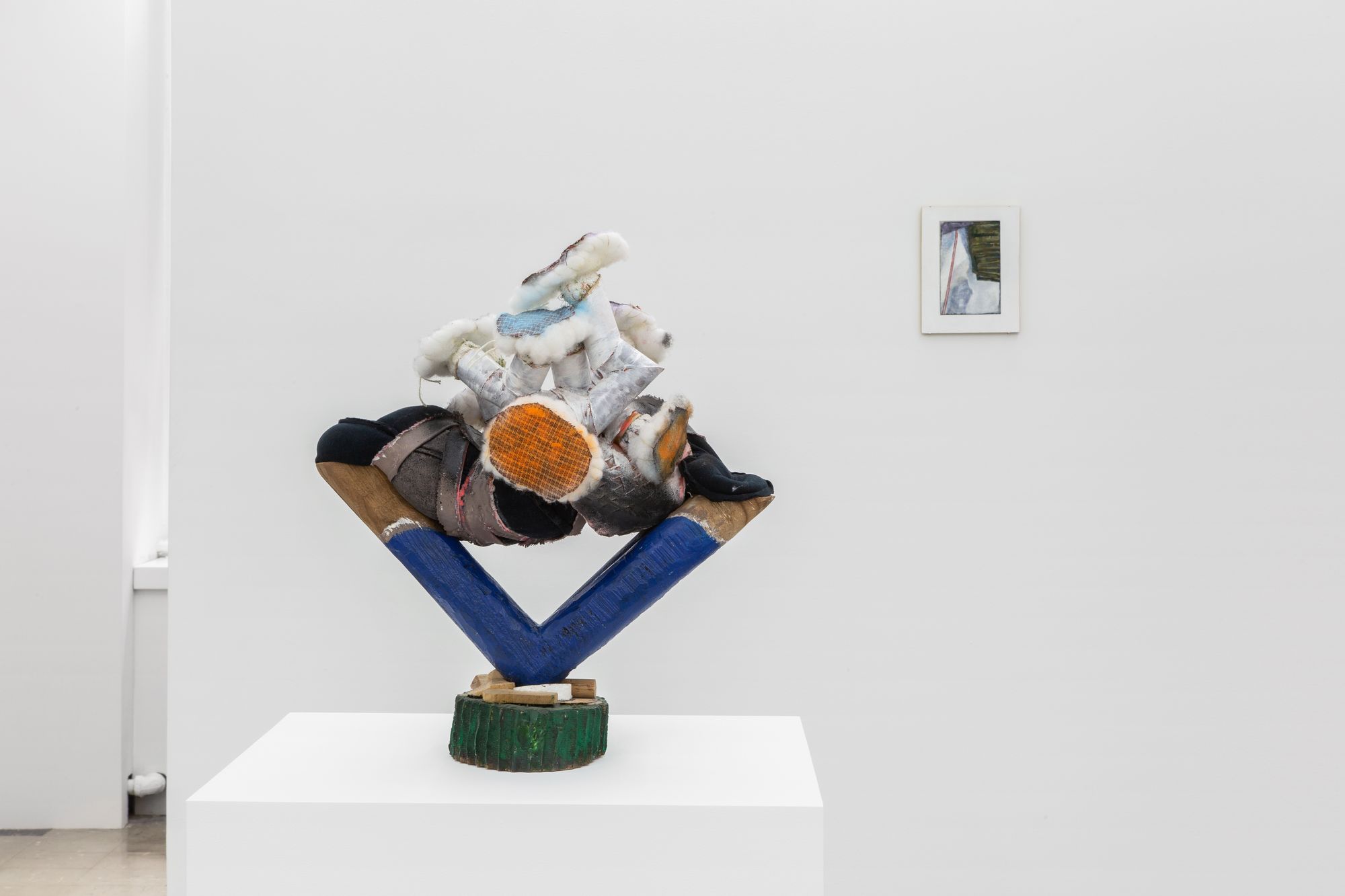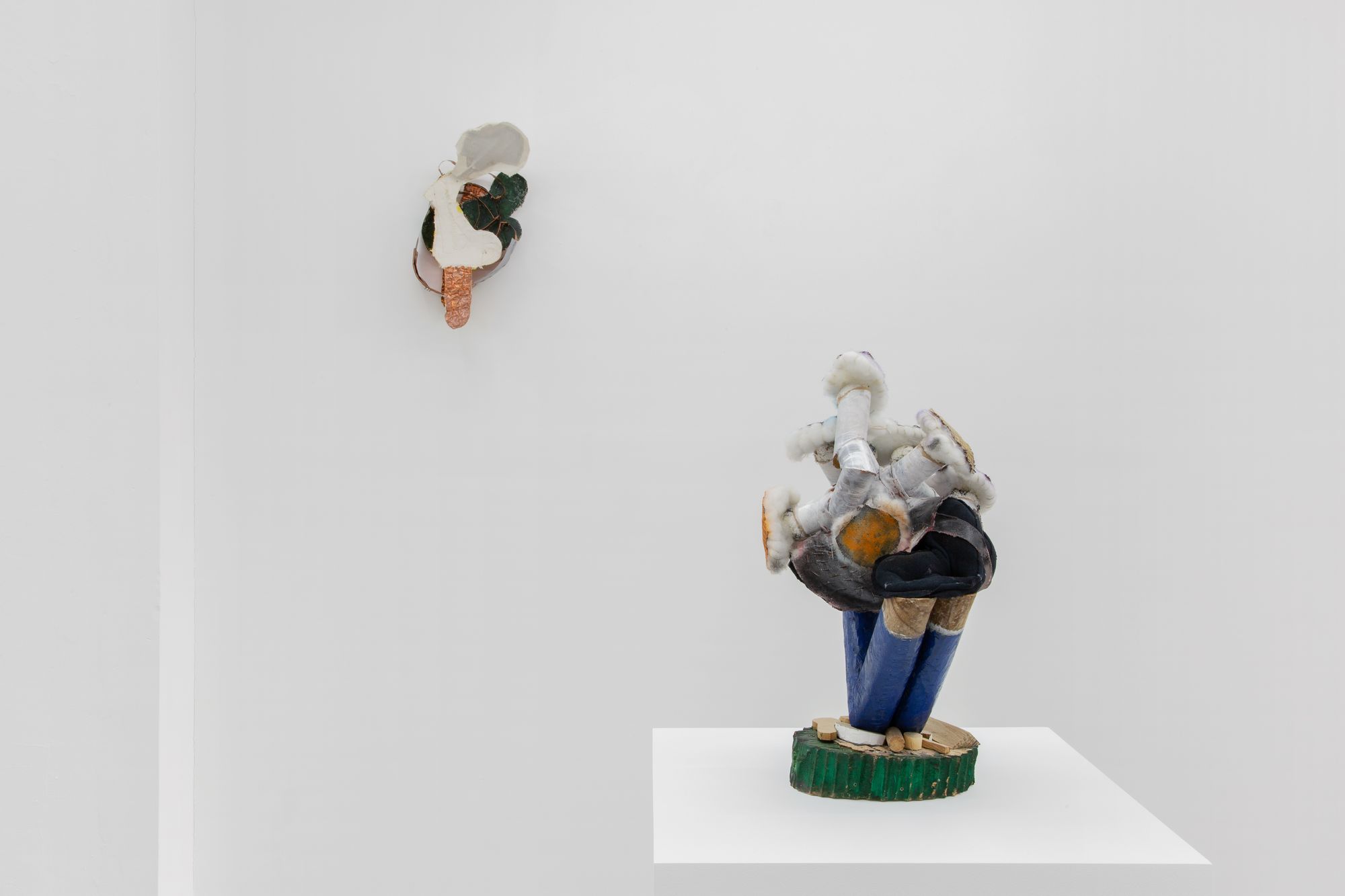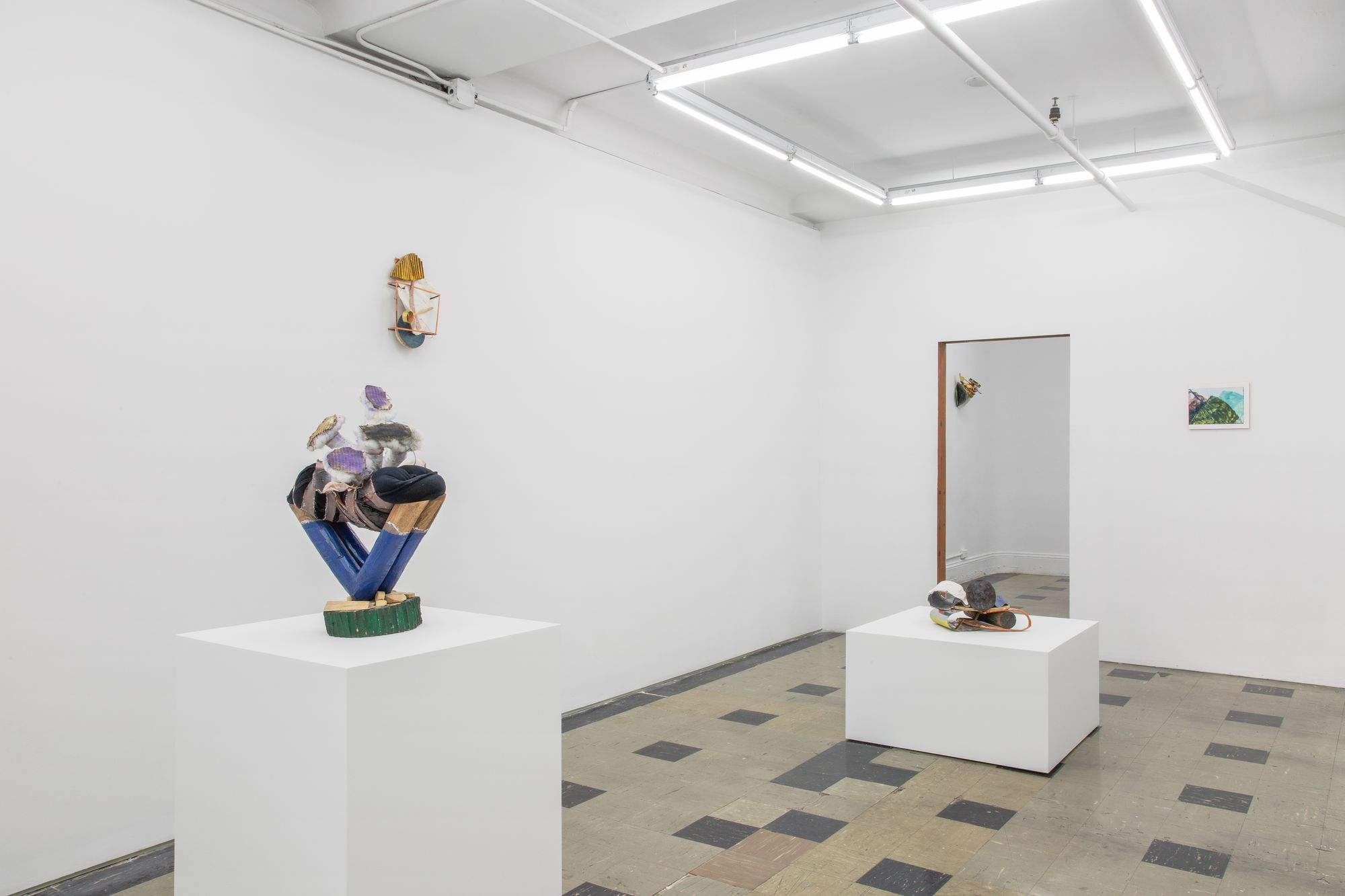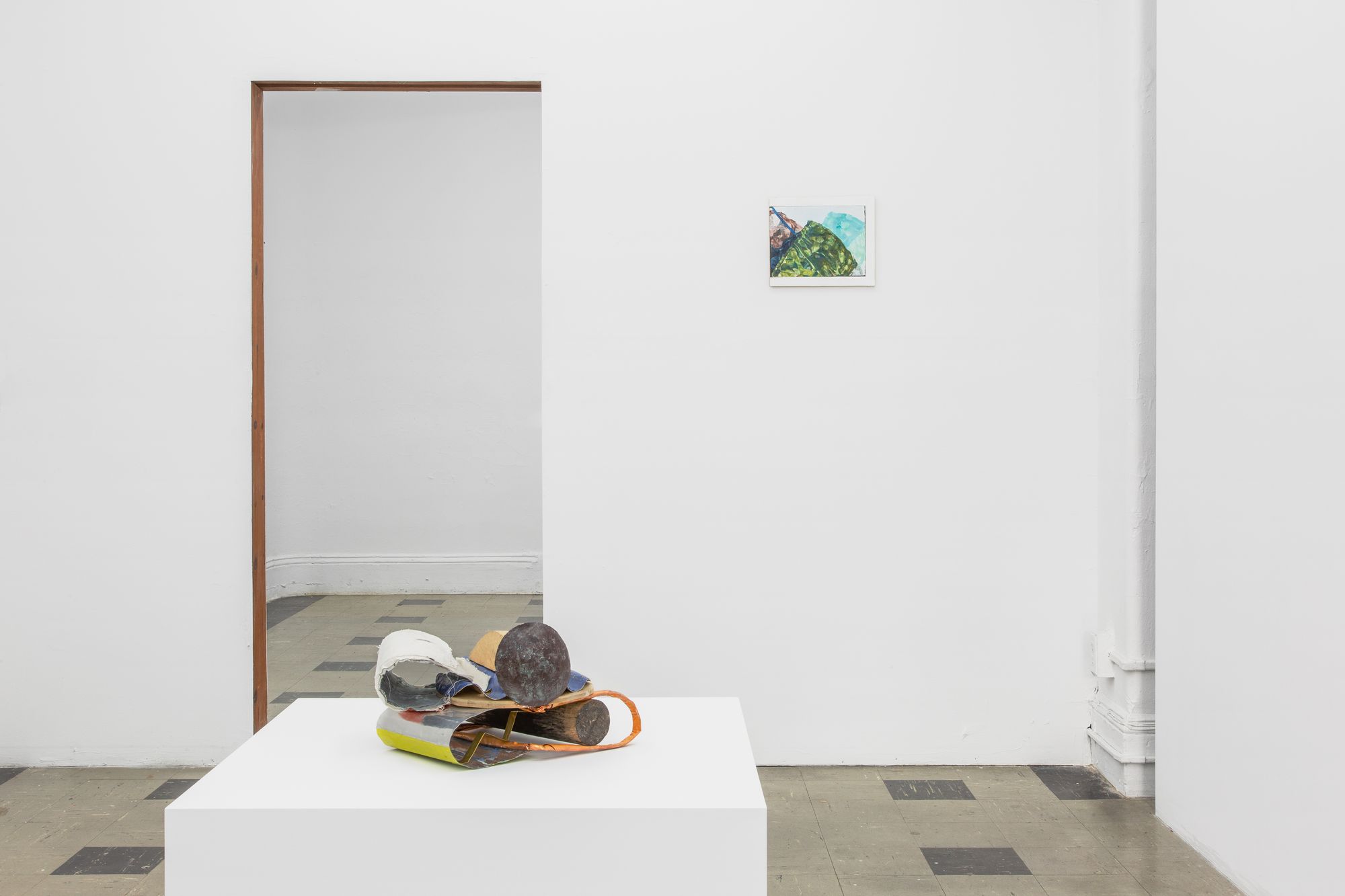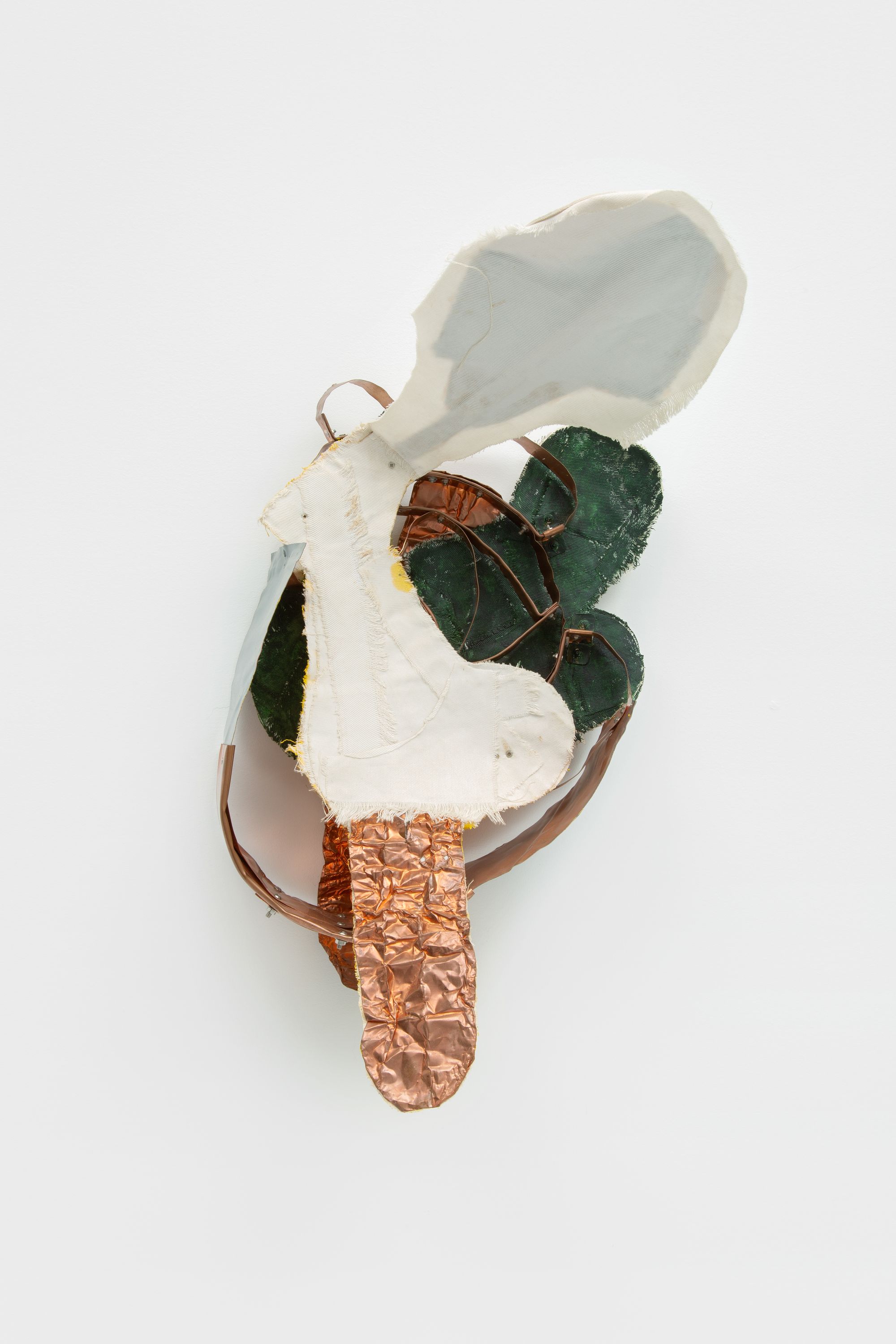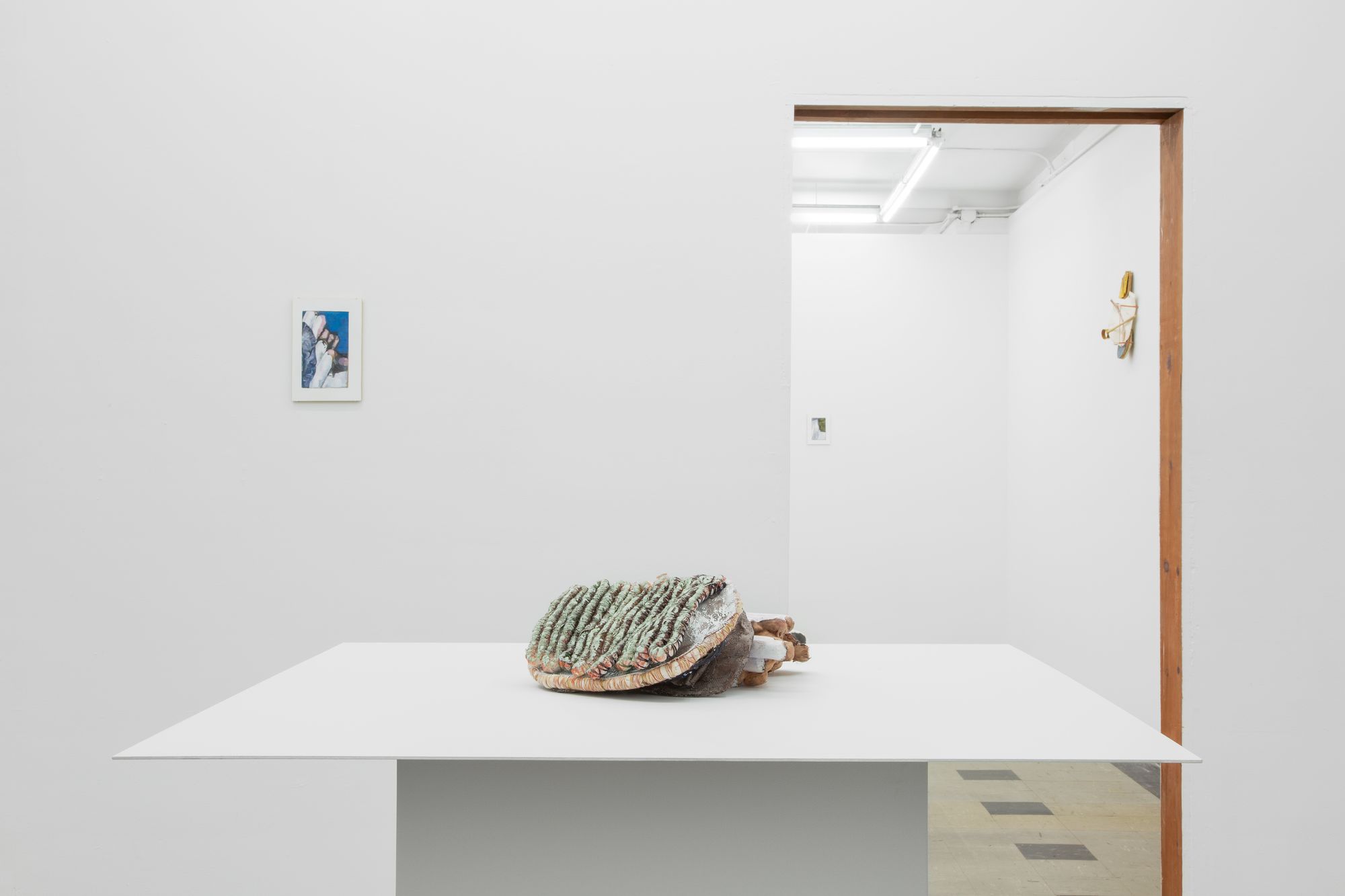
Past
Miho Dohi
Jan. 17–Feb. 28, 2021
New York
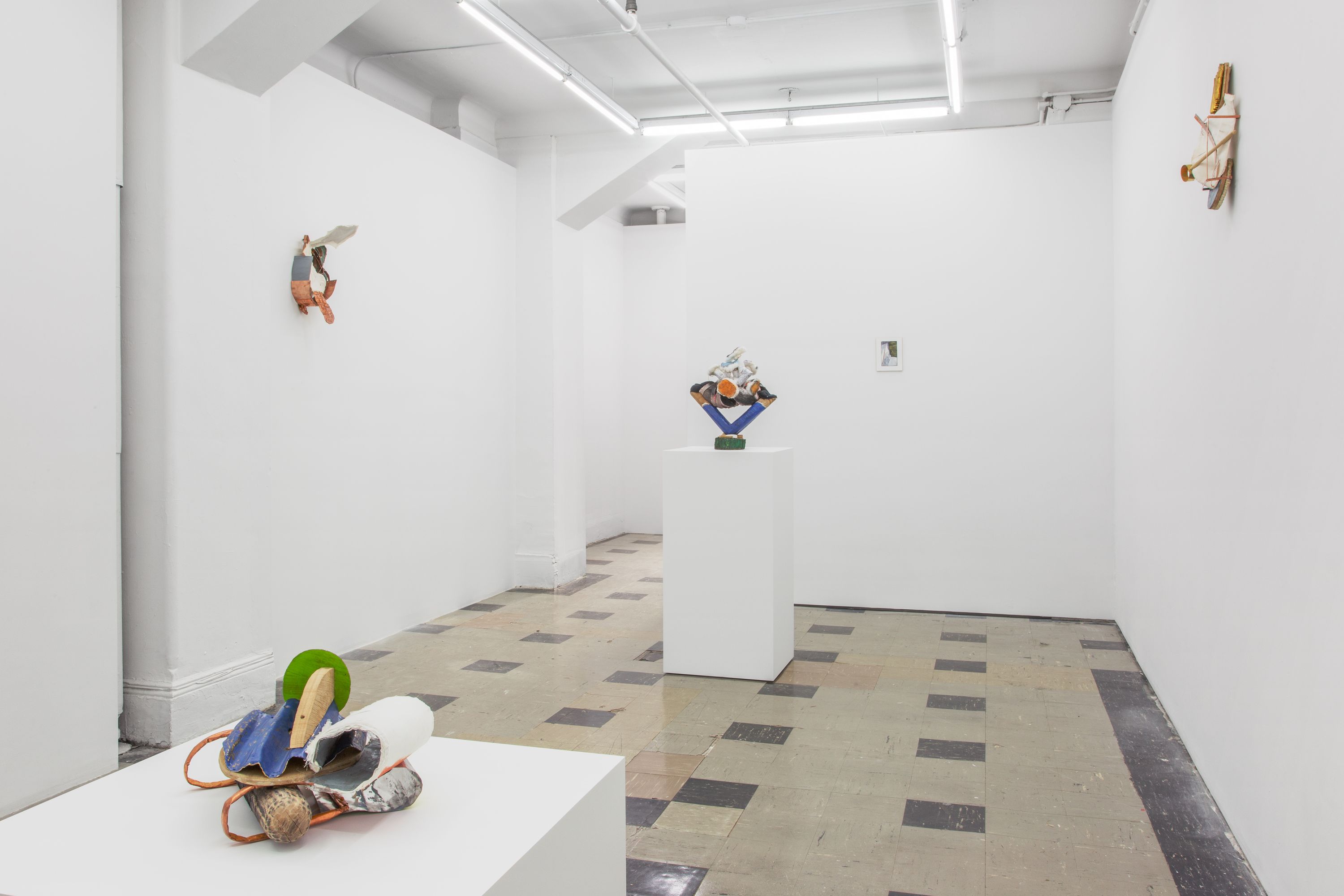
Gordon Robichaux is pleased to introduce an exhibition of new and recent work by Miho Dohi (b. 1974 in Nara Prefecture, Japan; lives and works in Kanagawa, Japan). This is Dohi’s first solo exhibition in New York following recent shows at Crèvecœur in Paris (2020), Nonaka-Hill in Los Angeles (2019), HAGIWARA PROJECTS in Tokyo (2018), and Lulu in Mexico City (2017). In 2020, the artist’s first solo institutional exhibition was scheduled to open at the Renaissance Society, University of Chicago and travel to the Carpenter Center for Visual Arts, Harvard University; due to the pandemic it was recast in an online format.
For Dohi’s debut exhibition at Gordon Robichaux, the artist presents six wall and tabletop sculptures—made with copper, string, cloth, wire, wood, brass, paint, and yarn—and four related paintings on wood panels. All are modestly scaled—small enough to be handheld. The installation fills two rooms of the gallery and, along with the design of the pedestals and placement of each artwork, was conceived by the artist. Taken as a whole, the group of works evidences Dohi’s haptic process and the possibilities of transforming quotidian materials into new forms.
Following her study of modeling the human body in school, Dohi was motivated to create “something I have never seen” that’s “beyond my imagination” and free from the constraints of what is observed or already known. Since 2008, Dohi has numbered and titled her sculptures buttai (物体). The Japanese word is composed of two kanji characters— 物 / but- (which means "thing") and 体 / -tai (which means “body”). Dohi explains: “All of my works are ‘objects’ and ‘bodies'.... A ‘thing’ that also has an element of ‘body’ which involves movement.” Using a carefully selected assortment of materials the artist collects for their beauty and their tactile qualities, as she works Dohi continually turns each assemblage—bending, binding, painting, sewing, hammering, screwing, coiling—to free herself, and to free the object from the limitations of a singular perspective or reading. Each buttai emerges with its own holistic logic and playful rigor, a form endowed with sensitivity, beauty, and humor that reveals the heuristic poetics of its making.
Alongside the buttai, Dohi presents four intimately scaled paintings on thin pieces of wood. Each is composed of a white panel inlaid with a smaller rectangular painted field that evokes a small window into a mysterious world. While the images suggest observed natural phenomena—a vast mountain vista, microscopic cellular configurations, craggy rocks, a bird—they are, in fact, painted from iPhone photos Dohi takes of details of the buttai. Mediated through the phone, the photographic crop, and the paint, Dohi further transforms and multiplies the possibilities of her buttai forms.
Install (12)

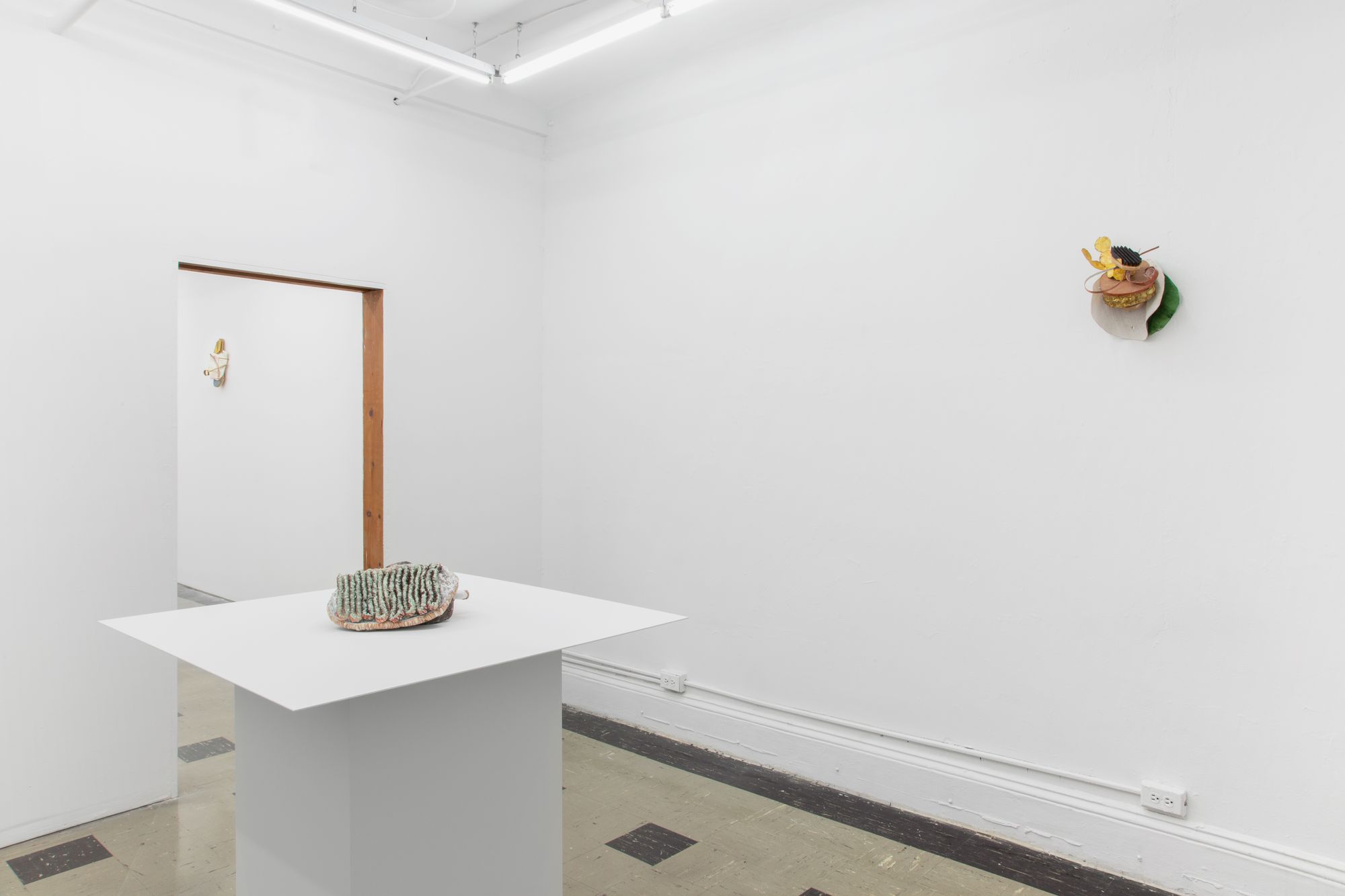
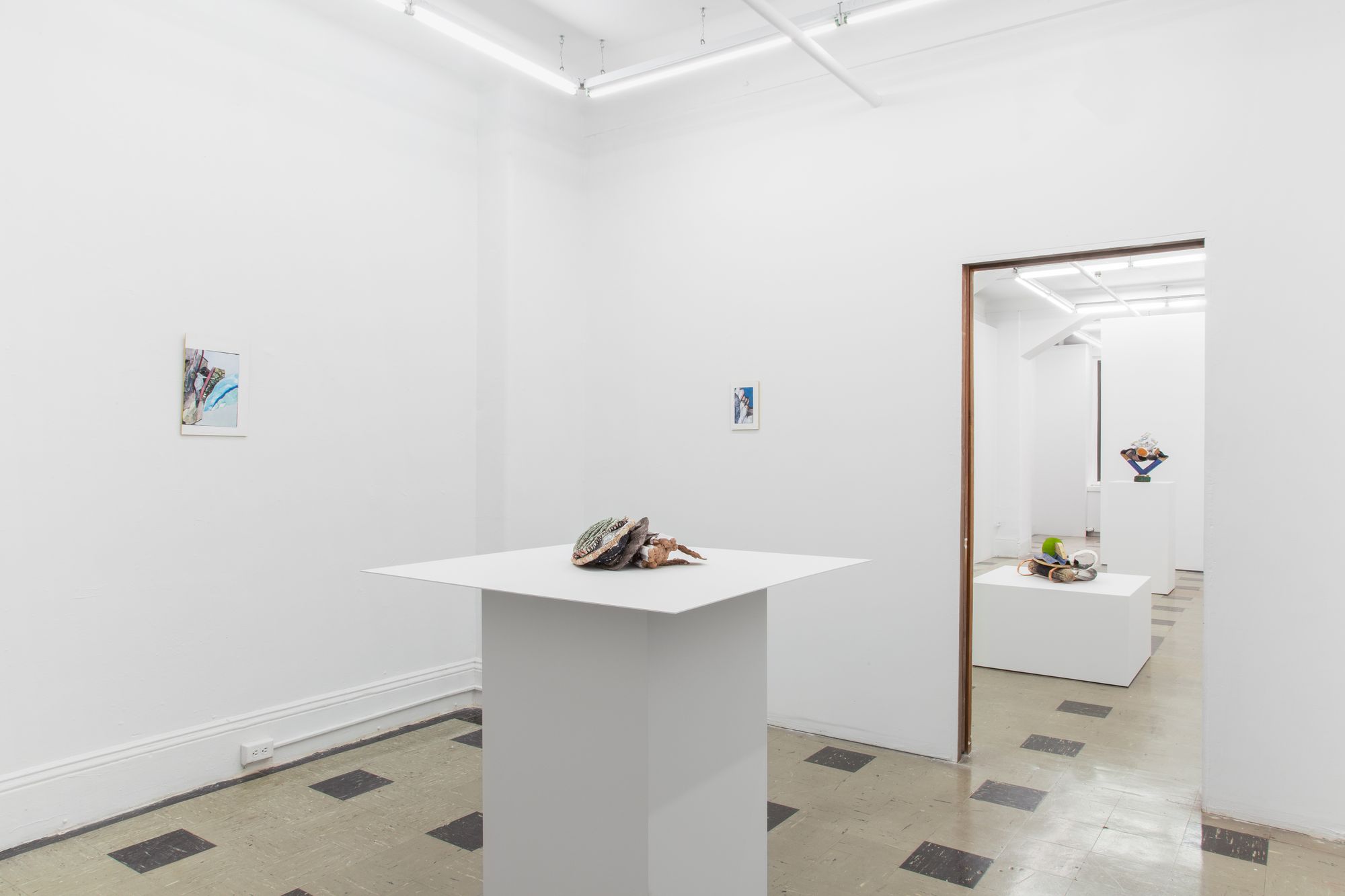
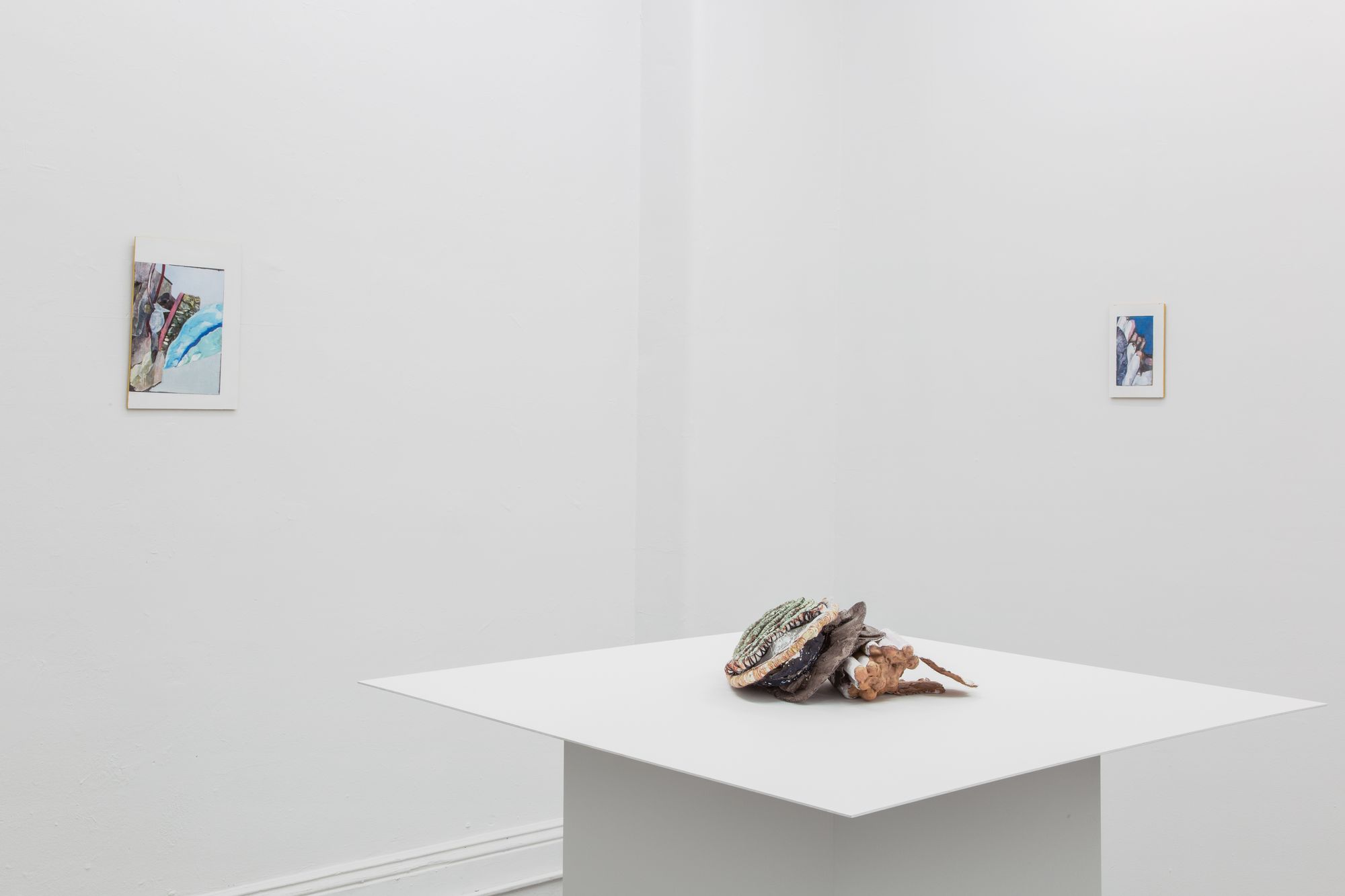


Works

buttai 78
Brass, wood, cloth, copper, paper, and acrylic
13.7 x 14.5 x 7.8 inches
2020
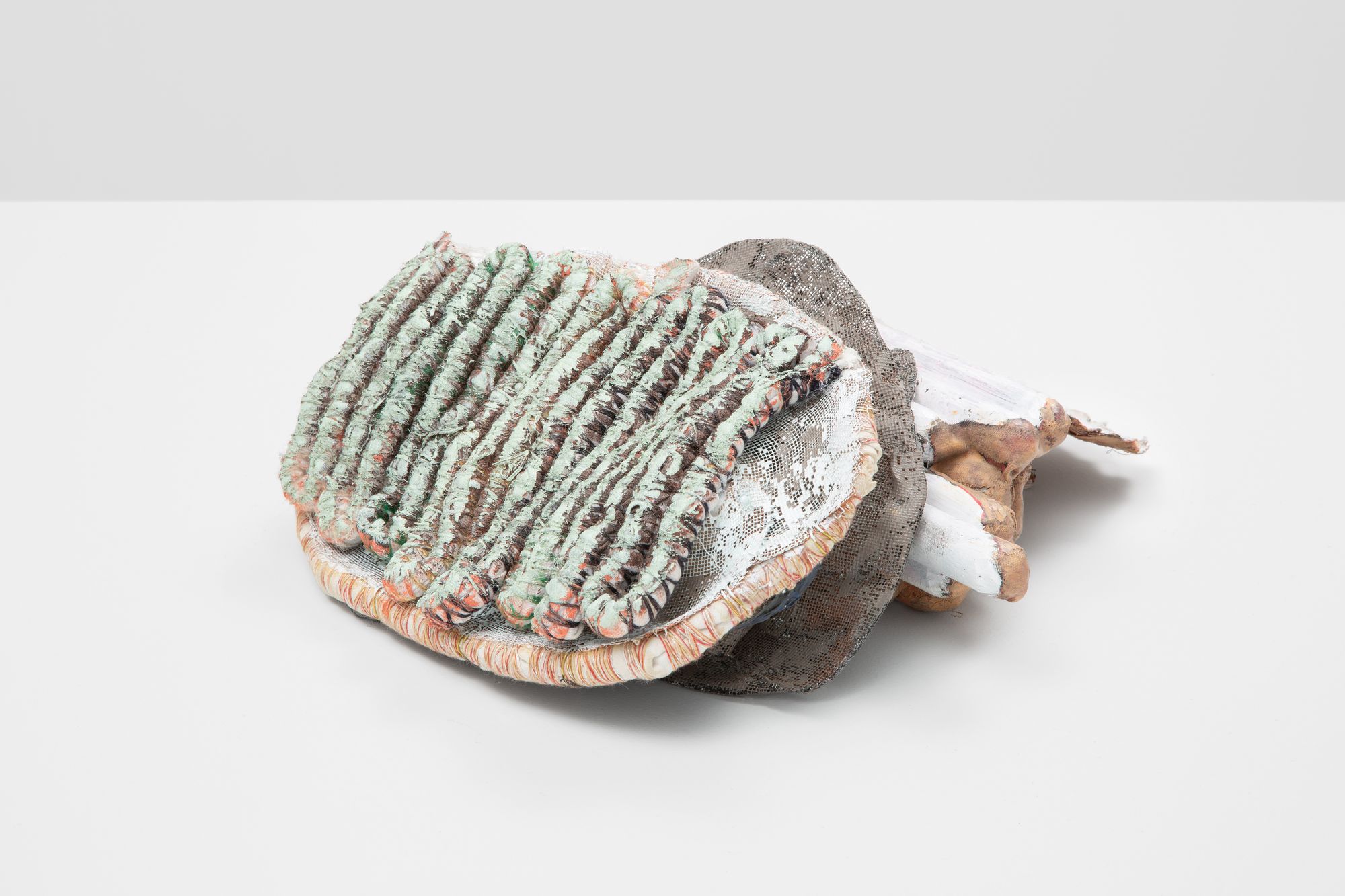
buttai 76
Copper mesh, cloth, wood, plaster, thread, acrylic, and others
4.3 x 13.3 x 11.4 inches
2020

Untitled
Acrylic and wood panel
14.9 x 9.8 x 0.19 inches
2020
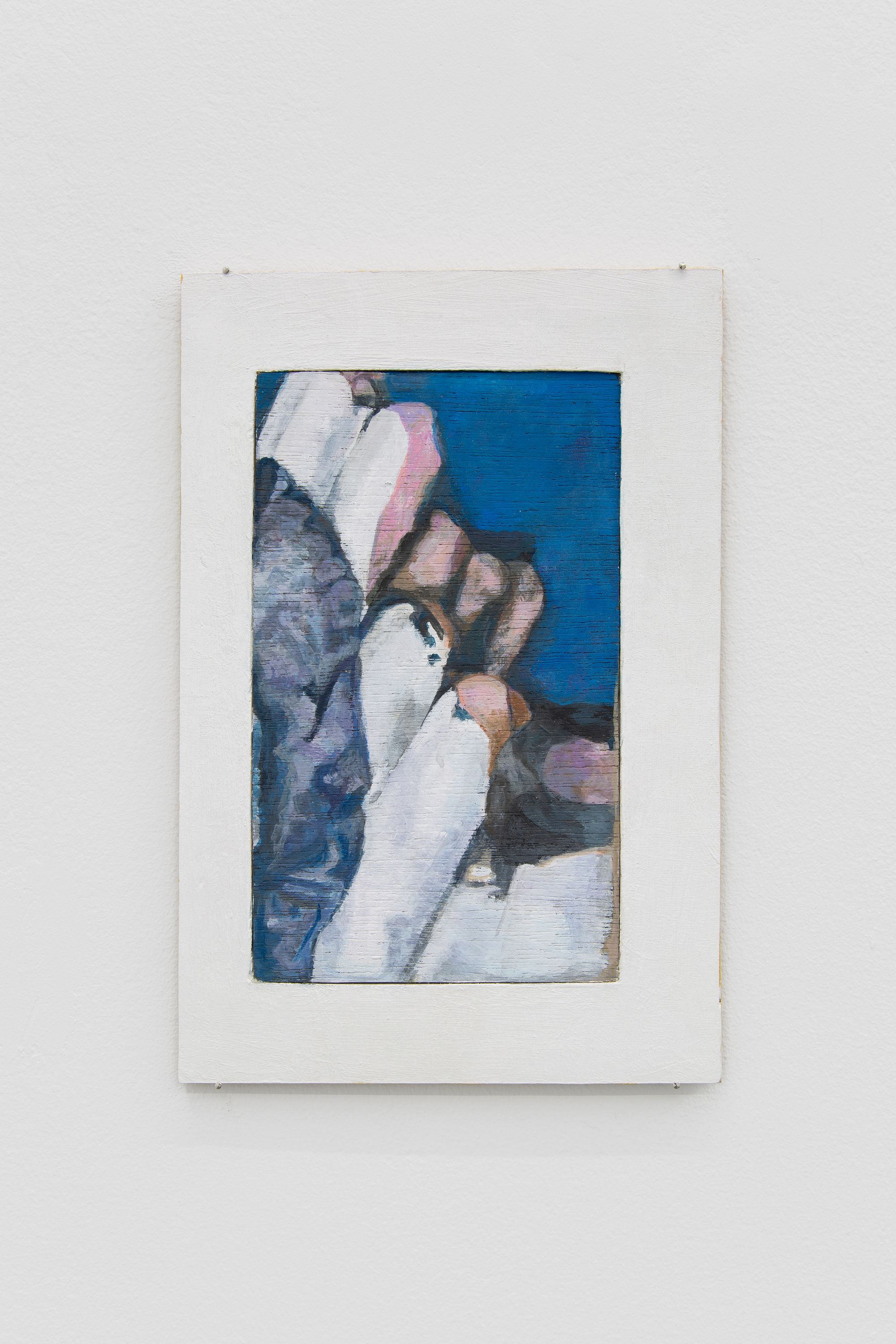
Untitled
Acrylic and wood panel
8.9 x 5.9 x 0.19 inches
2020
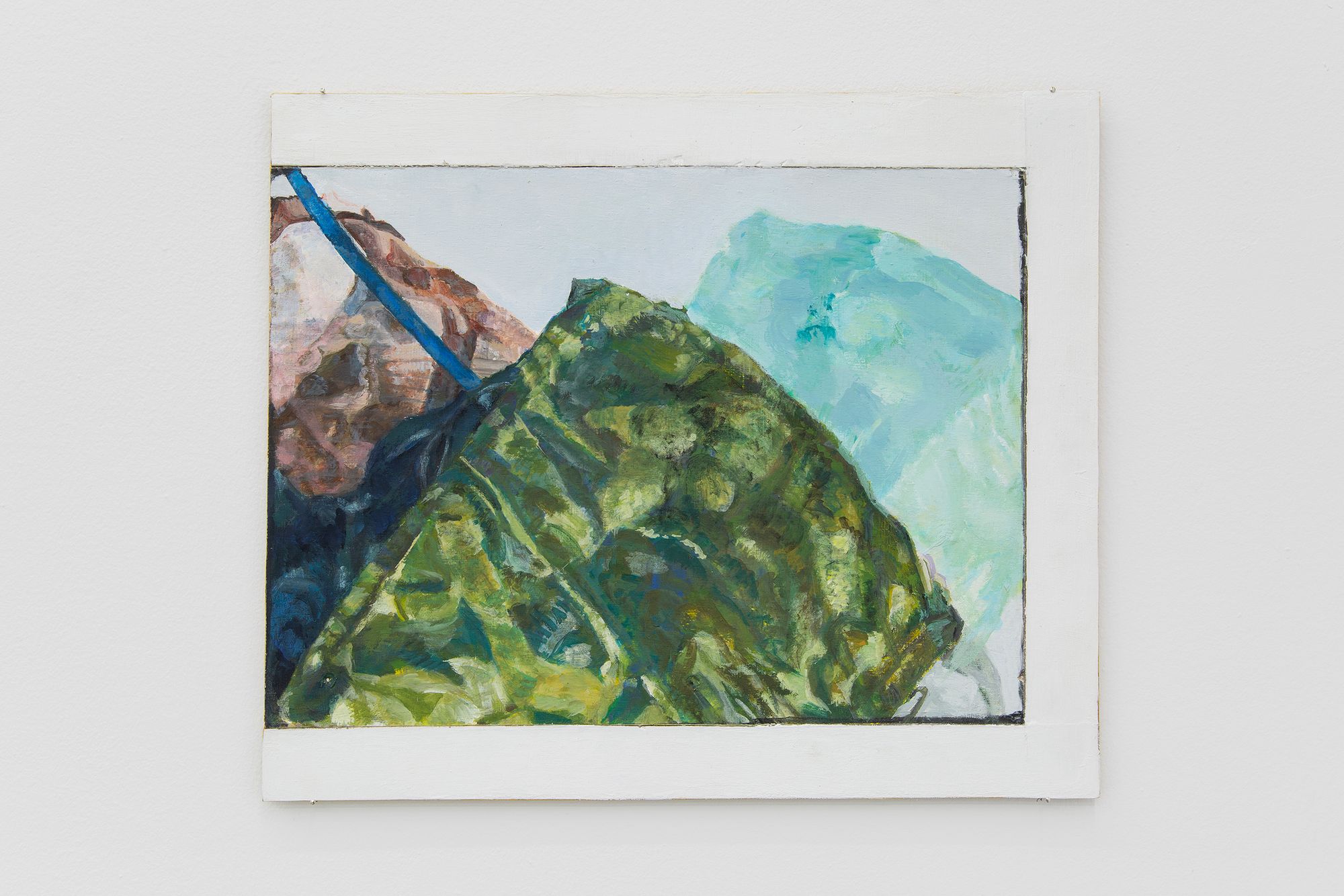
Untitled
Acrylic and wood panel
10.5 x 12.3 x 0.19 inches
2020

buttai 79
Brass, aluminum, copper, wood, cloth, and acrylic
9.4 x 16.9 x 16.9 inches
